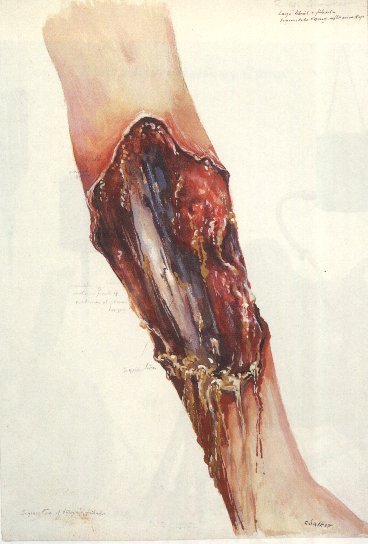![]()

Under unimaginable conditions, the doctors did what they could do. They had no proper
instruments or medicines. Operations were carried out in most cases without anaesthetics. Sometimes
chloroform was acquired, but this was very rare.
Operation tools were home made and very crude. An ordinary woodworkers saw was used as a bone saw. Sharpened knifes functioned as scalpels. Bent forks were used to keep an incision open during an operation. The operation room was near the camp kitchen, so there was always hot
water on hand.

The operation table was a camp bed on extended legs.
Malaria was common as was dysentery and beriberi. Without any medicines or vitamin
supplements, there was nothing the doctors could do for these patients. When they arrived in camp2 it was usually the end, and death was imminent.
After the capitulation it was discovered that the Japanese had all the necessary medical supplies in ware houses in
Pakanbaroe
On one occasion a doctor was called to perform an appendix operation, but after examination he
found no indication of it. Still he had to operate or he would have been shot. As there was no
reason what so ever to operate, he refused again. As a result the whole camp had to go without
water for twenty four hours and the camp commandant was reprimanded for loosing face.
All that could be done for beriberi patients was the draining of body fluid to ease their agony. But
in the end they died as there was no vitamins to cure them.

A tropical ulcer
To add to the suffering, prisoners in camp 2 were put on half rations as they could not work. This also complicated the healing process.
The main cemetery was near camp 2 across a creek and burial parties were the order of the day.
When timber for coffins was exhausted, the dead bodies were wrapped in woven bamboo mats.
The burial party carried these across the creek to the cemetery where they were buried in graves
dug by another party. There was no priest in the camp, so a volunteer performed the burial
ceremony and planted a wooden cross on the grave.
![]()